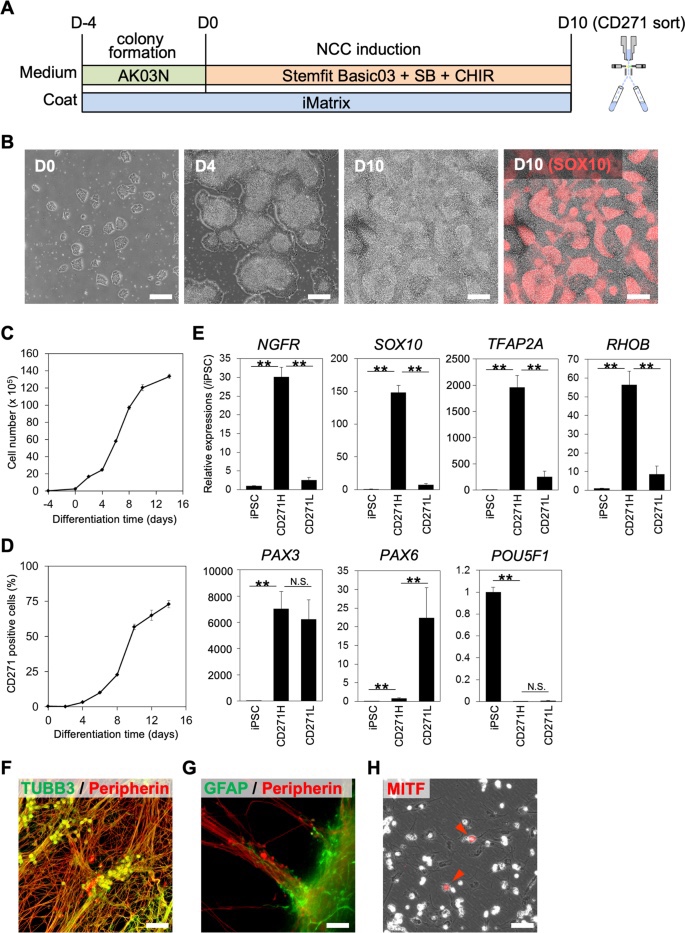
Culturing iPS: Reduce the risk of infectious diseases and make it safer!
– New culture method that does not use animal-derived ingredients –
Kyoto University:
We have developed a new method for culturing stem cells that become various tissues from iPS.
In the process of producing mesenchymal stem cells that become body tissues from iPS cells,
A Kyoto University group has developed a new culture method that does not use animal-derived components.
Safe new culture method:
“Infection risk in cell transplantation treatment” is reduced.
A new culture method will realize safer regenerative medicine.
It was published in the British Science Journal on September 15.
Kyoto newspaper
https://www.kyoto-np.co.jp/articles/-/880626
Establishment of a method for inducing mesenchymal stem cells from iPS cells Expecting use in regenerative medicine without containing animal-derived components | News | News & Events | CiRA | Kyoto University iPS Cell Research Institute
https://www.cira.kyoto-u.ac.jp/j/pressrelease/news/220915-180000.html
Cultiver des iPS : Réduisez le risque de maladies infectieuses et rendez-le plus sûr !
– Nouvelle méthode de culture qui n’utilise pas d’ingrédients d’origine animale –
Université de Kyôto :
Nous avons développé une nouvelle méthode de culture de cellules souches qui deviennent divers tissus à partir d’iPS.
Dans le processus de production de cellules souches mésenchymateuses qui deviennent des tissus corporels à partir de cellules iPS,
Un groupe de l’Université de Kyoto a développé une nouvelle méthode de culture qui n’utilise pas de composants d’origine animale.
Nouvelle méthode de culture sûre :
Le “risque d’infection dans le traitement par transplantation cellulaire” est réduit.
Une nouvelle méthode de culture réalisera une médecine régénérative plus sûre.
Il a été publié dans le British Science Journal le 15 septembre.
Journal de Kyoto
Mise en place d’une méthode d’induction de cellules souches mésenchymateuses à partir de cellules iPS Utilisation prévue en médecine régénérative sans contenir de composants d’origine animale | Actualités | Actualités et événements | CiRA | Institut de recherche sur les cellules iPS de l’université de Kyoto
iPS kultivieren: Risiko von Infektionskrankheiten reduzieren und sicherer machen!
– Neue Kulturmethode, die keine tierischen Inhaltsstoffe verwendet –
Universität Kyoto:
Wir haben eine neue Methode zur Kultivierung von Stammzellen entwickelt, die aus iPS zu verschiedenen Geweben werden.
Bei der Herstellung von mesenchymalen Stammzellen, die aus iPS-Zellen zu Körpergewebe werden,
Eine Gruppe der Universität Kyoto hat eine neue Kulturmethode entwickelt, die keine tierischen Bestandteile verwendet.
Sichere neue Kulturmethode:
Das “Infektionsrisiko bei der Zelltransplantationsbehandlung” wird reduziert.
Eine neue Kulturmethode wird eine sicherere regenerative Medizin realisieren.
Es wurde am 15. September im British Science Journal veröffentlicht.
Kyoto-Zeitung
Etablierung eines Verfahrens zur Induktion mesenchymaler Stammzellen aus iPS-Zellen Erwarteter Einsatz in der regenerativen Medizin ohne tierische Bestandteile | News | News & Events | CiRA | iPS Cell Research Institute der Universität Kyoto
Induction of functional xeno-free MSCs from human iPSCs via a neural crest cell lineage
npj Regenerative Medicine
Abstract
Mesenchymal stem/stromal cells (MSCs) are adult multipotent stem cells.
Here, we induced MSCs from human induced pluripotent stem cells (iPSCs) via a neural crest cell (NCC) lineage under xeno-free conditions
and evaluated their in vivo functions. We modified a previous MSC induction method to work under xeno-free conditions.
Bovine serum albumin-containing NCC induction medium and fetal bovine serum-containing MSC induction medium
were replaced with xeno-free medium.
Through our optimized method,
iPSCs differentiated into MSCs with high efficiency.
To evaluate their in vivo activities,
we transplanted the xeno-free-induced MSCs (XF-iMSCs) into mouse models
for bone and skeletal muscle regeneration and confirmed their regenerative potency.
These XF-iMSCs mainly promoted the regeneration of surrounding host cells,
suggesting that they secrete soluble factors into affected regions.
We also found that
the peroxidasin and IGF2 secreted by the XF-iMSCs partially contributed to myotube differentiation.
These results suggest that XF-iMSCs are important for future applications in regenerative medicine.